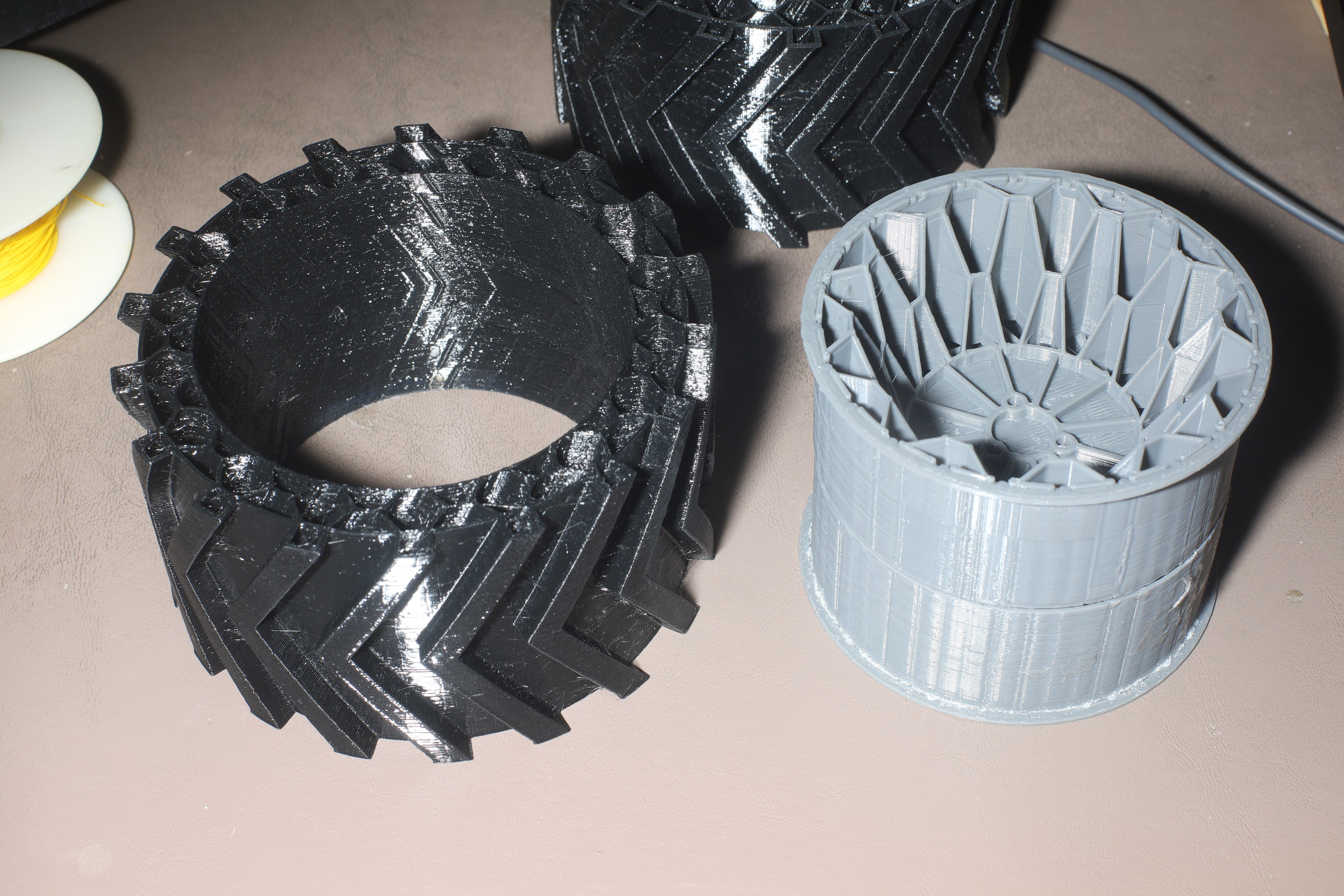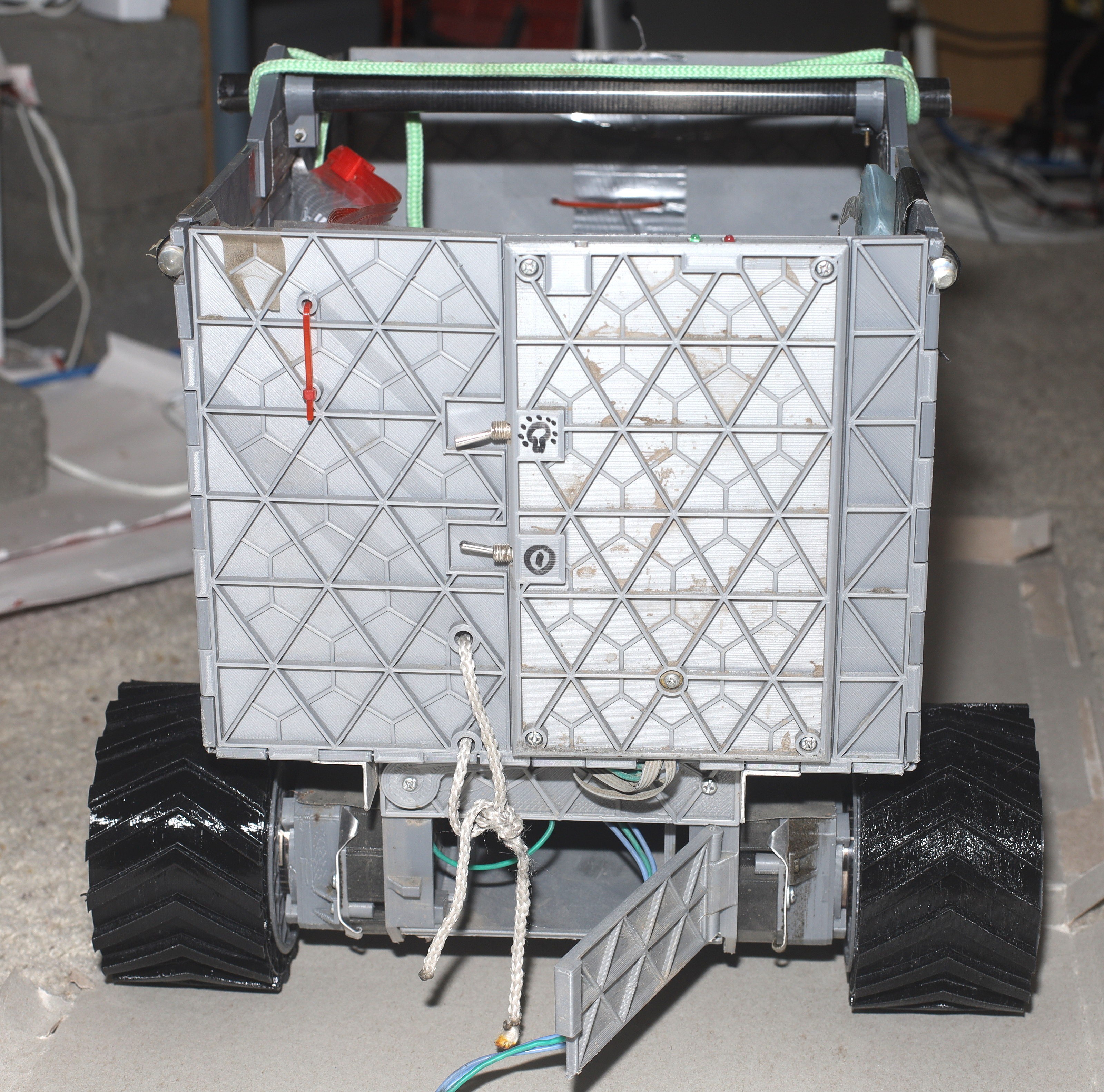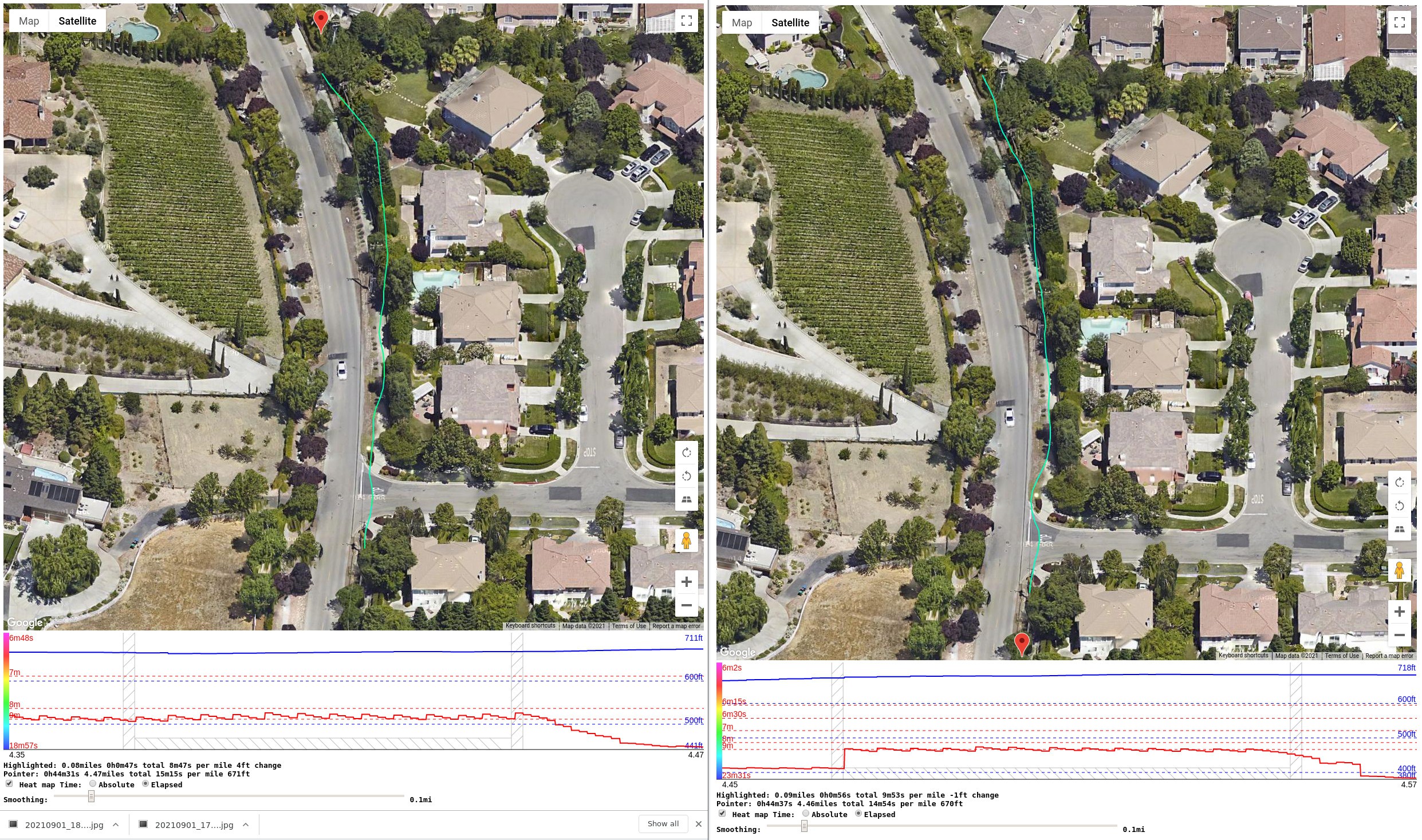







After 48 hours of printing, the 1st 60mm wide wheels arrived. If these can't get around on gravel, nothing below a scooter can. It immediately became obvious that they're hard to install. There's no way to see the motor holes down those wide hubs.
There's no easy way to detach the hubs from the tires so they can't be glued. They're so wide, it's going to be really hard to steer. The original lunchbox was 290mm across. These are 320mm. The next tires should be 45mm wide, at most. They should also have 5mm more TPU, since the tread pattern is not flexible.
These use a 10mm honeycomb + 5mm tread to allow the same hubs to fit the smooth tires. It was later decided printing all new hubs was more convenient than changing the tires on the same hubs. Obviously, they're only going to be on when an offroad drive is planned.
The original lunchbox tended to have its hubs crack where the right angles are. The hex hubs have a lot less material in the key right angle, but benefit from wrapping around the motor. The hex could be extended all the way to the bolts, but it would be expensive.
It might have been easier to stick the original lunchbox tires on, but they had less range & were expensive. The worst case 3D printed tire is cheaper than a $5 lunchbox tire.


So the 60mm treaded tires made it up the test trail in 4m33s, the same as the 30mm tires. There was subjectively no obvious improvement in traction, but speed highly depends on how much gravel the driver goes over. They didn't materially affect the steering. They might have made the very fastest turns slower.
The mane problem is they had so much mass, they instantly popped the motor's retaining rings off. There are ways to make the retaining rings permanent, by drilling into the motor shafts.
The mane evidence of improved traction is they left much less of a mark than the 30mm tires, so they were pushing forward more instead of throwing dirt back. Another section of trail with less gravel showed them going much faster than the 30mm tires, but it was bugger all distance for estimating speed from GPS. A shift of a few GPS readings makes the speeds equal.
Attention turned to updating the container.
Wider container ribs near the top. Thinner container ribs near the bottom
1mm thick PLA under the headlights.
Smaller holes for headlight zip ties.
Screw on corner farsteners for the container.
The mane problem is optimizing the container mass requires automated bed leveling. There's no way the bed can be within .2mm at every point. The trick with the BL touch is it can't measure changes in the bed leveling caused by the nozzle pressing filament down on it.
 lion mclionhead
lion mclionhead
Discussions
Become a Hackaday.io Member
Create an account to leave a comment. Already have an account? Log In.